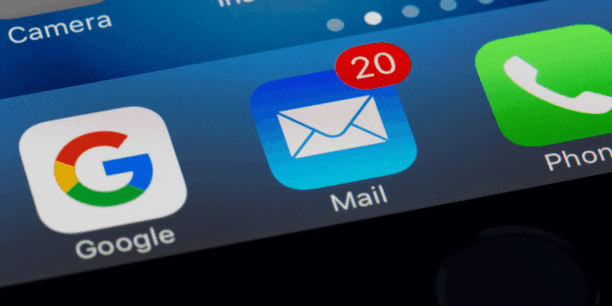19 Digital Advertising Acronyms for Nonprofits

Digital platforms, like search engines and social media, are free for any organization to participate in. However, these technologies are increasingly becoming pay to play, meaning your nonprofit should strongly consider investing in paid advertising to get its full effect.
Whether investing in social, search, or retargeting, there are a range of different paid ad approaches your organization can take. When done effectively, these ads can boost what you already do with organic marketing content and extend your brand awareness.
However, digital advertising success requires a deep understanding of fundamental advertising principles. That begins with a mastery of the basic acronyms associated with digital advertising. If you don’t yet understand the difference between SEO and SEM or PPC and PPV, we’ve got you covered.
1. KPI: Key Performance Indicator
Before determining which digital ad strategy to take, you must know what goals your nonprofit wants to achieve.
Key performance indicators (KPIs) are quantifiable measurements of performance over time. These significant metrics help inform your organization’s decision-making and strategic improvement, heavily impacting your mission. In other words, these numbers help you make the most of your data.
Not sure which KPIs your nonprofit should measure? Start with these 12 Nonprofit KPIs Every Charitable Organization Should Track.
2. SEM: Search Engine Marketing
Google and alternative search engines index and share websites, blog posts, and other digital destinations in organic search results based on authority, content value, and keywords. However, these tech companies make money from targeted ads that appear among organic search results based on the user’s query.
The practice of paying for these search ad slots is search engine marketing (SEM). This is slightly different from search engine optimization (SEO), which adapts your site’s content to best rank in organic search results. Aside from the issue of paid (SEM) versus not (SEO), both still benefit each other.
If you need some help boosting your nonprofit website’s SEO, take a look at these 7 SEO Tips and Tricks You Can’t Afford to Ignore.
3. CTA: Call to Action
Every digital ad should drive users toward a single, specific action. Whether to donate, volunteer, or visit your website, your call to action (CTA) should be compelling and clear. It should also be simple for the user to execute, requiring just a single click.
While there are plenty of CTAs to choose from, pick one action that nudges your users to continue their journeys with your organization.
4. CTR: Click-Through Rate
Whatever your CTA is, the goal is to receive a click from the user. Therefore, measuring the number of clicks compared to how many people saw the ad is a key metric for understanding the ad’s effectiveness. This is the click-through rate (CTR).
CTR is a crucial metric to track for email marketing as well. An average benchmark for CTR in 2023 is about 6.3%, but the higher the percentage, the better.
Formula: CTR = (Clicks/Impressions) x 100
5. CRO: Conversion Rate Optimization
Increasing the number of users clicking on your ad requires improving your conversion rate. This process is conversion rate optimization (CRO).
Nonprofits can gradually improve conversion rates by testing out different ad variables like headlines, copy, and CTAs. Here are 6 A/B Test Ideas to Improve Your Nonprofit Marketing Metrics.
CRO isn’t just limited to just digital ads, either. It’s also a helpful practice for optimizing your blog CTAs and even those hosted on your website.
6. CPM: Cost Per Thousand Impressions
The cost per digital advertisement depends on the type of ad. Cost per thousand impressions (CPM) is the most common form of ad pricing. It means your organization is charged a set amount for every thousand times your ad is shown.
Because this strategy focuses more on exposure than conversions, it’s the best option for a brand awareness campaign. In this instance, your goal is to have a low CPM to reach more people with a smaller budget. The average CPM on Google in 2019 was about $41—meaning it costs $41 for an ad to show up 1,000 times in Google searches.
Formula: Total Cost = (Total Impressions x CPM)/1,000.
7. CPC: Cost Per Click
The next most popular form of ad payment after CPM is cost per click (CPC). As you can probably guess, you only pay when a user clicks your ad. Keep in mind that the same person could click your ad multiple times, and you’ll get charged for each click.
CPC is the amount you pay and is interchangeable with the concept of pay-per-click (PPC).
This approach is better suited for an action-oriented campaign because the ad might be exposed to fewer people overall, but they’ll be more targeted based on their likelihood to click. The average CPC on an ad is typically lower than CPM—between $4 to $6 in 2022.
Formula: Total Cost = Clicks x CPC
8. CPA: Cost Per Acquisition
A user might see your ad and even click on it, but this doesn’t guarantee they’ll become a supporter of your organization. If that’s your ultimate focus, consider paying for each new supporter your organization acquires. Known as paying by the cost per acquisition (CPA), this closely relates to cost per lead (CPL), which requires advertisers to pay a set amount for every lead.
CPA ad campaigns are even more action-oriented than CPC ads because the goal is to add people to your organization. You only pay for people who become donors or volunteers, but you’ll usually have to pay significantly more compared to a click or impression.
9. PPV: Pay Per View
Despite how it sounds, pay-per-view (PPV) doesn’t mean paying a cable outlet to watch a boxing match—at least not in the context of digital advertising. In this case, PPV means only paying when specific criteria for viewing the ad have been set, like the impression duration.
This is especially valuable for video views because PPV allows you to track how many viewers engaged with your content for at least a set duration before you pay for the ad placement. It ensures people aren’t scrolling straight past your ad without noticing it.
10. VTC: View Through Click
Not everyone who comes to your site does so because they clicked on one of your ads. Plenty of people will see your ad, don’t click it, and then navigate to your website later. This is a view-through click (VTC).
VTC shows the extended power of digital advertising. For instance, even if someone doesn’t initially click your ad or CTA, you’ve still increased your brand awareness and planted the seed for converting them later.
11. VCR: Video Completion Rate
Similar to PPV, the video completion rate (VCR) shows the percentage of viewers who watch your entire video ad to the end. This directly indicates how effective that ad is in holding people’s attention.
VCR can also help inform your optimization strategy for your future video ads, which may include testing various lengths of video content. Video ads of less than a minute have a 58% completion rate compared to a 43% VCR for videos between 2 to 10 minutes.
12. ROAS: Return on Advertising Spend
If you’re familiar with marketing, you know the term return on investment (ROI). Return on advertising spend (ROAS) is the ad-specific acronym for ROI. It’s essentially a comparison of how much fundraising you brought in from an ad campaign versus the campaign’s ad budget.
ROAS is a valuable metric to keep in mind because you’re likely dealing with a limited marketing budget and need to make every dollar count. As long as your ROAS figure is above 100%, your ad campaign is profitable.
Formula: ROAS = Revenue/Advertising Costs
13. DSP: Demand Side Platform
Nonprofit organizations typically don’t place ads directly on sites or search engines. Instead, ad placement is traditionally accomplished through a third-party service called a demand-side platform (DSP).
These platforms allow you to show ad inventory across an array of ad networks, including the Google Display Network (GDN)—the largest collection of ad sites online. Using a DSP, you can bid on ad buys across a range of sites, and the DSP will place them for you.
14. RTB: Real-Time Bidding
Because ads get paid out based on impressions and clicks, the prices fluctuate. Think about the cost of airline tickets that change by the minute based on supply and demand. That’s why real-time bidding (RTB) is crucial.
Your organization places a bid on how much you’d willingly pay for a click or thousand impressions. The DSP then compares that to the other bids going to the same sites. The highest bid is typically the winner, although search engines like Google also take the relevance of the ad to a specific search term into account.
15. DMA: Designated Market Area
The benefit of digital advertising is how narrowly you can target users, which includes focusing on a specific geographic area with your ads. This geographic location you select to target is your designated market area (DMA).
DMAs originally came about because of television markets and are maintained annually by Nielsen Holdings. However, these areas also apply to digital advertising, except you have the flexibility to be more broad or specific than a static television market.
16. RON: Run of Network
Most digital ad campaigns run through an ad network like the GDN. Run of network (RON) means your ad cycles through a grouping of websites rather than one specifically. This is different from the run of site (ROS), where your ad cycles through placements on a specific website.
Both RON and ROS apply directly to display advertisements that show as banner or interval ads on external websites. Keep in mind that this isn’t synonymous with social media ads that run within a social platform (like Facebook or Instagram) or a search engine ad that appears within the results of a search.
18. SOV: Share of Voice
Your nonprofit is not the only organization bidding on ad placements. The share of voice (SOV) is the percentage that your ad gets seen compared to other advertisers. If you’re one of five rotating ads in a single placement, your SOV is 20%. However, if your ad is the only one displayed for placement, your SOV is 100%.
19. IAB: Interactive Advertising Bureau
The Interactive Advertising Bureau (IAB) sets the industry standard for digital advertising, including ad specifications. All online digital ads are subject to IAB standards, and ad publishers must follow them.
Making the Most of Your Nonprofit’s Digital Advertising
To get the most out of your digital ad spend, it’s critical to understand the basics of paid advertising. The ever-evolving online space may feel overwhelming, but with the proper tools and resources, your nonprofit can stay ahead and remain on top.
If you’re ready to continue your learning journey, check out these 10 Tips to Boost Your Nonprofit’s Digital Marketing With Google and Facebook Ads.
Posted in Marketing

The Nonprofit Digital Marketing Checklist



